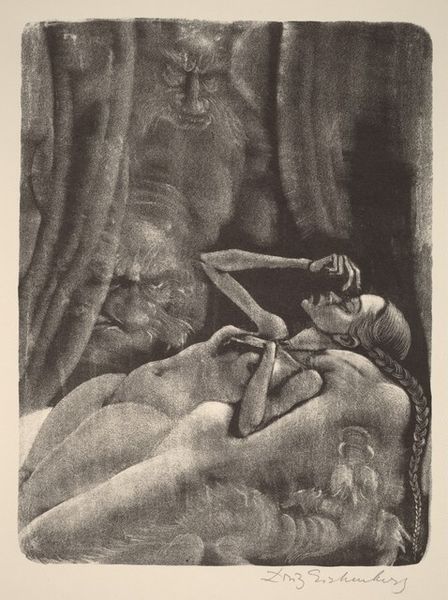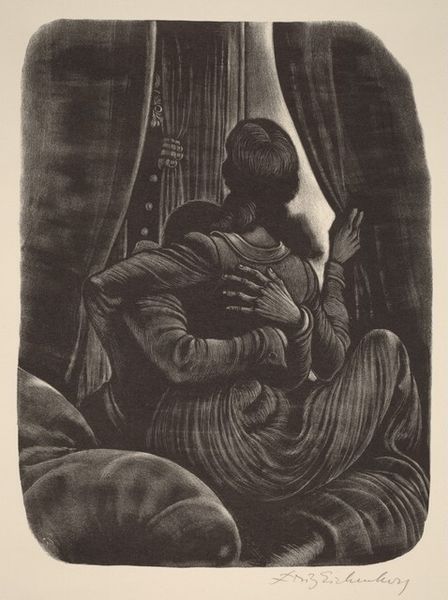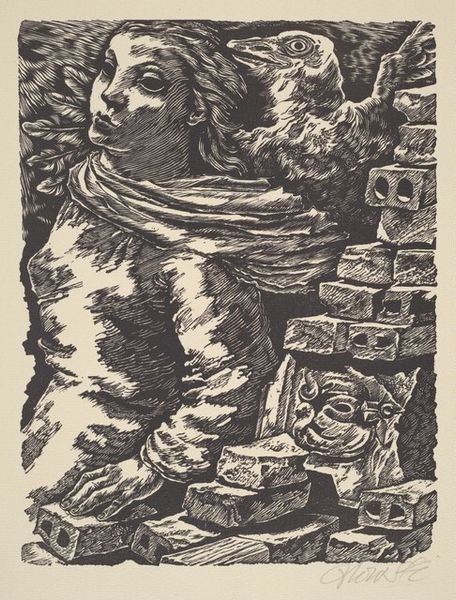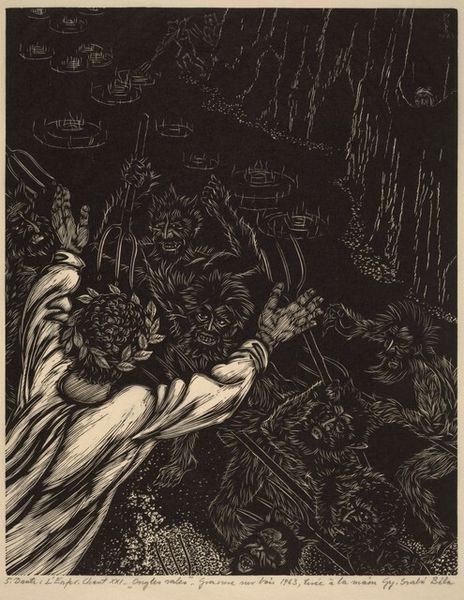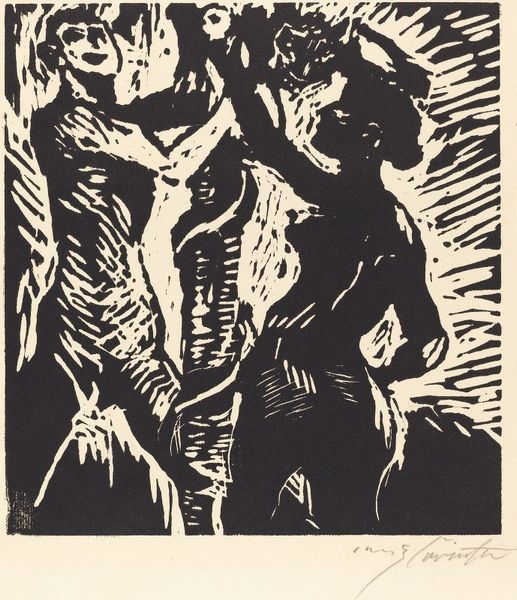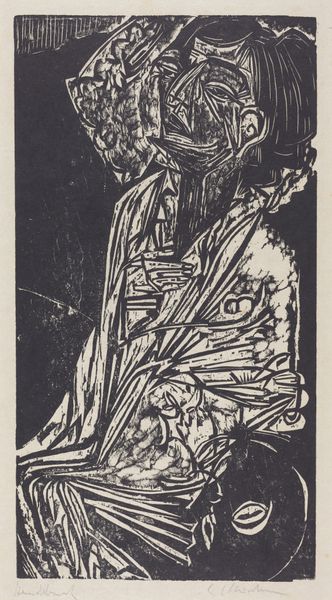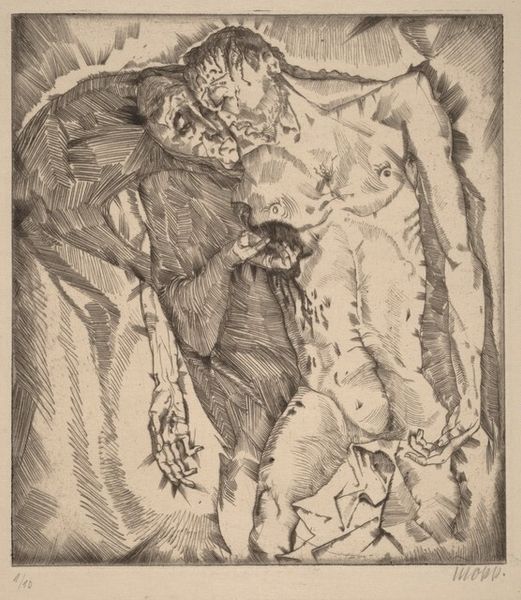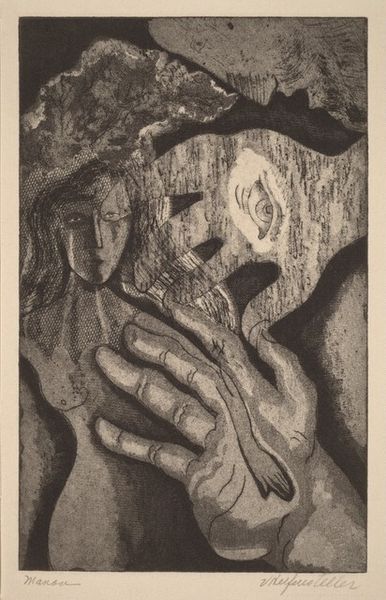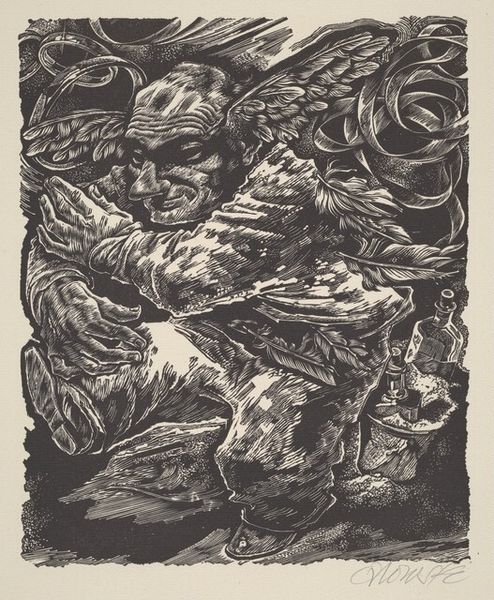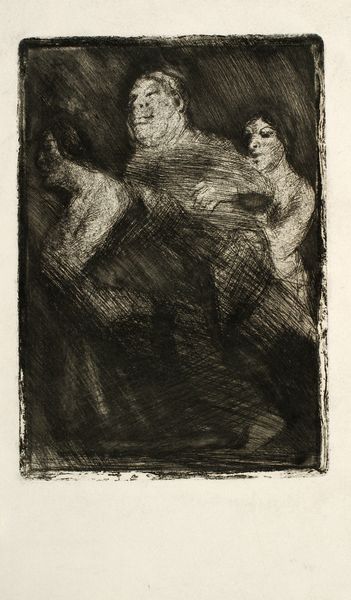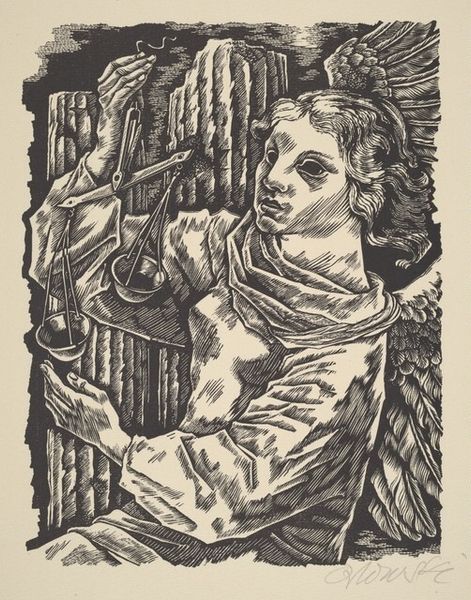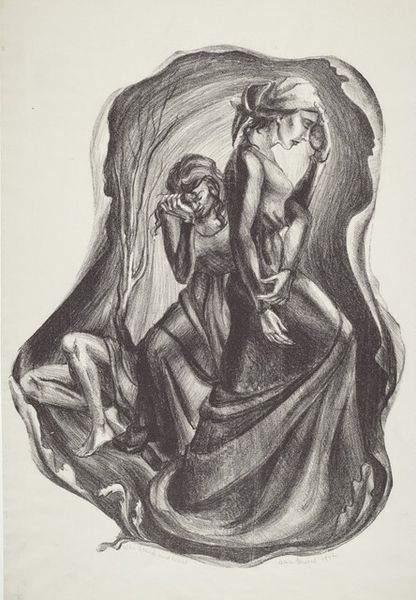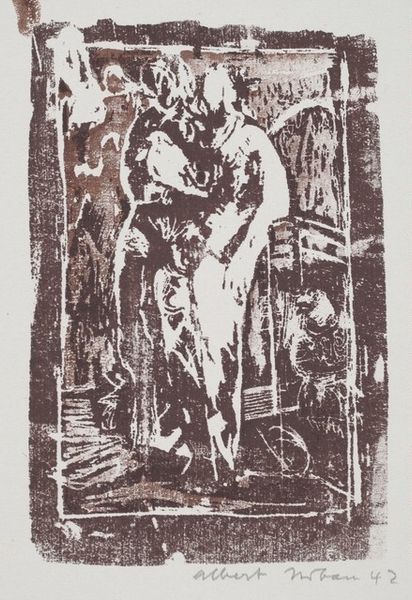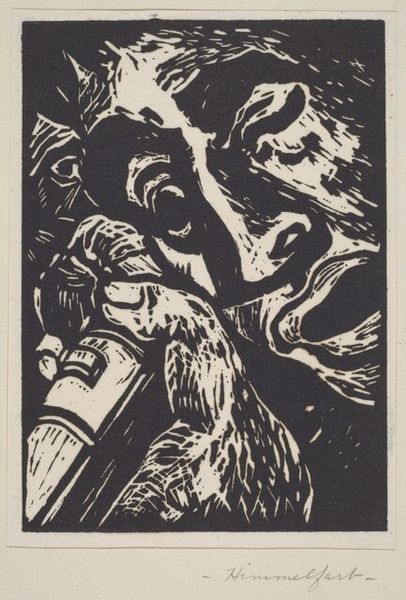
Dimensions: overall: 35.3 × 25.1 cm (13 7/8 × 9 7/8 in.)
Copyright: National Gallery of Art: CC0 1.0
Curator: Hans Orlowski’s “Appeal,” created in 1946. It is a powerfully evocative engraving, quite small in scale, typical of his printmaking work. Editor: It’s incredibly striking! The sharp contrasts and raw quality of the engraving create an almost desperate mood. There’s such urgency in the figures’ embrace. What strikes you most about its imagery? Curator: For me, it’s the angel figure. You know, in iconography, angels are messengers. The second figure seems to look directly to this winged entity in the hopes of a connection beyond what his surroundings allow, especially with that upturned hand to its face and wide eye that gives away the nature of ‘Appeal’ itself. Editor: True. And it’s interesting to consider this work's creation in post-war Germany, 1946. We're looking at materials reflecting scarcity: an inexpensive printmaking process, starkly contrasting inks doing all the expressive heavy lifting. How much of that feeds into the emotional impact for you? Curator: Massively! This visual language stems from the Expressionist movement, where personal experience and emotional realities, like that of surviving war, is represented in simplified forms of inner turmoil, perhaps reaching out for divine intervention to stop future catastrophe. Editor: And that act of dissemination, making it available through prints... It becomes a kind of collective scream rendered through accessible means. One imagines Orlowski choosing engraving specifically for its reproducible nature, for reaching beyond a singular gallery and hitting streets or homes, embedding that message within a broader population. Curator: I agree. Considering this artwork through the lens of lived history adds layers to the symbols at play; it is so crucial for unlocking how "Appeal" operates in the psyche. Editor: Absolutely. I hadn't quite placed the power of the medium to be so deliberately placed, not simply available for the purpose but a central part of its affecting intent. Curator: Yes, it highlights the powerful role of artists who grapple with their environment by channeling both external experiences and inner sentiments through accessible imagery. Editor: An enduring reminder of art's capacity for bearing witness, and speaking to a society through a vital materiality born of the everyday and in this case, made possible by recovery from total societal upheaval.
Comments
No comments
Be the first to comment and join the conversation on the ultimate creative platform.
